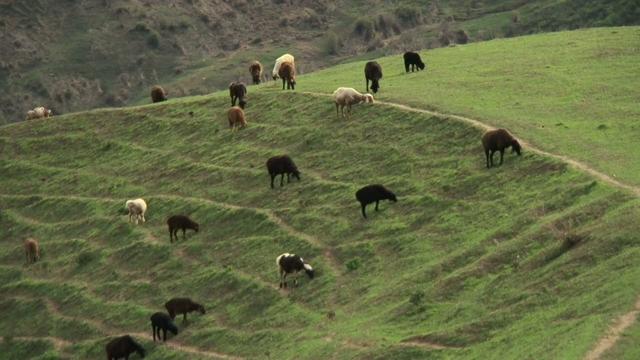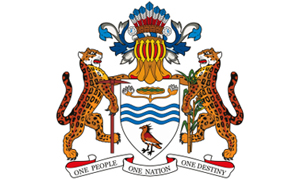Guyana's Second National Communication
Project Overview
The creation of a National Communication offers countries the opportunity to contribute with technically sound studies and information that can be used for designing mitigation and adaptation measures, and project proposals that can and will help increase their resilience to the impacts of climate change. Activities generally include: V&A assessments, Greenhouse Gas Inventory preparation, Mitigation Analysis or Education, and awareness raising activities. The ultimate goal is the integration of climate change considerations into relevant social, economic and environmental policies and actions.
Protection for the sustainable management of biodiversity is important to achieving the Millennium Development Goals (MDGs). These goals are unlikely to succeed if environmental sustainability and access to energy services for the poor are not fully addressed.
To view progress on Guyana's SNC click here.
Project Details
Guyana, based on the 1994 national inventory, makes only a minor contribution to emissions of greenhouse gases. However, increases in the global mean temperatures could have significant impact, especially on the coastal plain and on activities including the dominant agriculture sector in Guyana.
Guyana is a tropical country situated on the northeastern coast of South America. It is bounded on the north by the Atlantic Ocean, on the east by Suriname, on the south by Brazil and on the west by Venezuela. It is an English-speaking country with close ties with the English-speaking Caribbean Islands. It is a member of the Caribbean Community (CARICOM) which has its headquarters in Georgetown, the capital city.
Protection for the sustainable management of biodiversity is important to achieving the Millennium Development Goals (MDGs). And these goals are unlikely to succeed if environmental sustainability and access to energy services for the poor are not fully addressed.
UNDP aims to help the Government of Guyana to strengthen its capacity to address these challenges at national and community levels by seeking out and sharing best practice, providing innovative policy advice and linking partners through pilot projects so that poor people can have access to the help they need to build sustainable livelihoods.
Guyana occupies 214,970 km2 and boasts a rich biodiversity, thanks to its location at the edge of the Amazon basin. It is estimated that forestry covers 78% of the country. Guyana has the following characteristics:
- It is a low-lying state with a vulnerable coastal strip 77 km wide in the east and 26 km wide in the western Essequibo region.
- Ninety percent (90 %) of the population resides in the coastal strip where the main urban centres and commercial activities are to be found.
- There is a wide range of geographic types with coastal, hilly sandy, highland, forested and savannah regions.
- There is no current tectonic activity in Guyana and indications are that the Guyana shield (and the coastal strip, in particular) will not be affected by convergence of the South and North American plates.
- There is a high level of rainfall variability in the country and the seasons and climate are determined mainly by this variability. There are two wet and two dry seasons. First Dry Season (February to April); First Wet Season (April to July) Second Dry Season (July to November); and the Second Wet Season (November to January)
The country can be divided into climatic regions ranging from dry (annual rainfall less than 1788 mm) to extremely wet (annual rainfall greater than 4100 mm).
Key Results and Outputs
- Sustainable development and the integration of climate change concerns into medium- and long-term planning
- Inventories of anthropogenic emissions by sources and removals by sinks of greenhouse gases
- Measures contributing to addressing climate change
- Research and systematic observation
- Climate change impacts, adaptation measures and response strategies
- Education, training and public awareness
Monitoring and Evaluation
In 1992, countries joined an international treaty, the United Nations Framework Convention on Climate Change, to cooperatively consider what they could do to limit average global temperature increases and the resulting climate change, and to cope with whatever impacts were, by then, inevitable.
Parties to the Convention must submit national reports on implementation of the Convention to the Conference of the Parties (COP). The required contents of national communications and the timetable for their submission are different for Annex I and non-Annex I Parties. This is in accordance with the principle of "common but differentiated responsibilities" enshrined in the Convention.
The core elements of the national communications for both Annex I and non-Annex I Parties are information on emissions and removals of greenhouse gases (GHGs) and details of the activities a Party has undertaken to implement the Convention. National communications usually contain information on national circumstances, vulnerability assessment, financial resources and transfer of technology, and education, training and public awareness.
Since 1994, governments have invested significant time and resources in the preparation, collection and validation of data on GHG emissions, and the COP has made determined efforts to improve the quality and consistency of the data, which are ensured by established guidelines for reporting. Non-Annex I Parties receive financial and technical assistance in preparing their national communications, facilitated by the UNFCCC secretariat.




